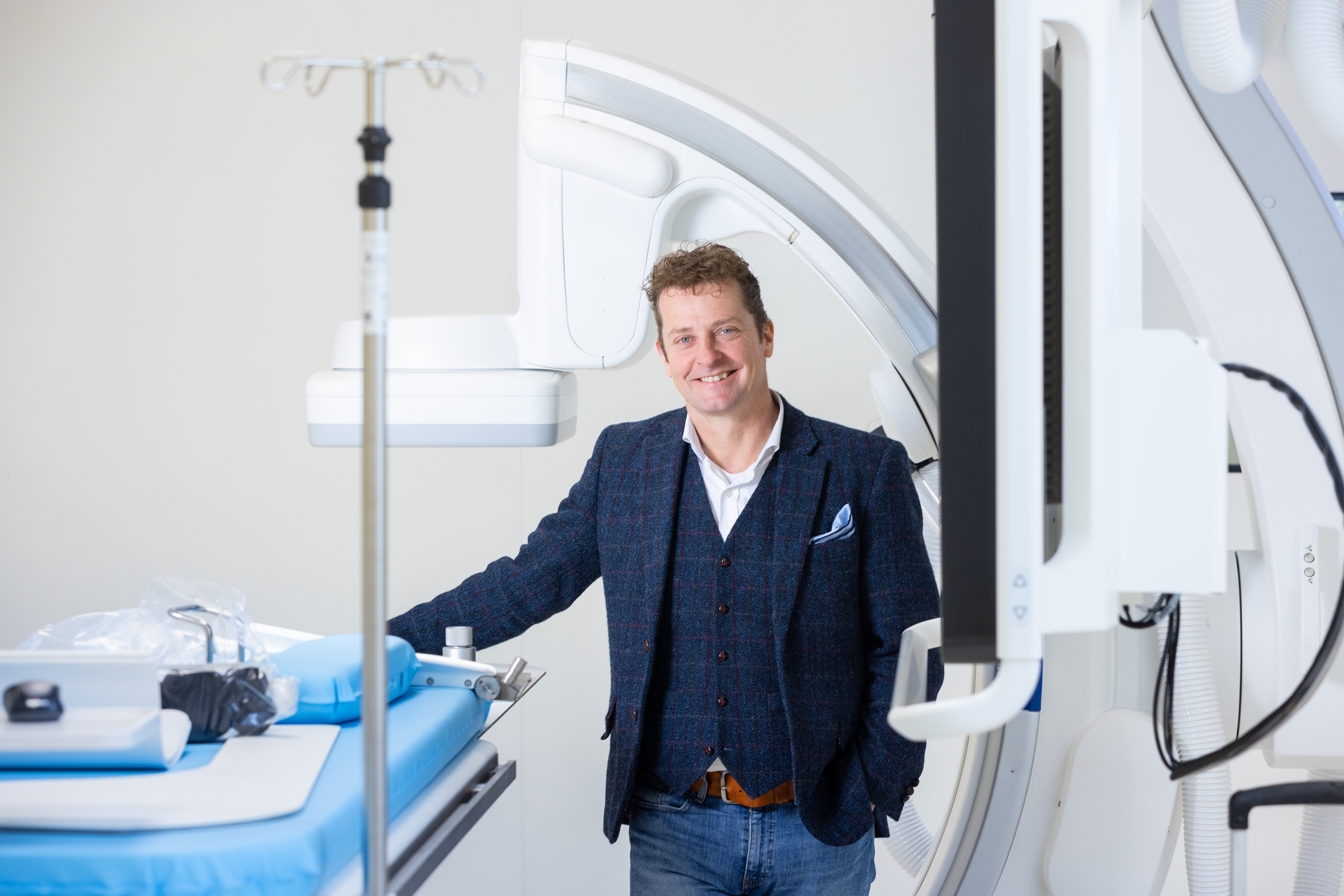Searching for signals in the new science of gravitational waves
In 2015, scientists measured a gravitational wave for the first time. It was a breakthrough that not only confirmed Albert Einstein’s theory of relativity, but also marked the start of an exciting voyage of discovery into the origin and future of the universe. Jessica Steinlechner and her research group at Maastricht University are making their contribution in the form of mirror coatings that will improve our ability to make such measurements.
Last year, the Steinlechners popped the champagne at their home in Aachen on two separate occasions. The first was in summer, when Jessica Steinlechner heard she had been awarded a Vidi grant from the NWO’s Talent Programme to the tune of €800,000. Not long after, a letter arrived in the post awarding her a Starting Grant of €2.5 million from the European Research Council. The funding allows her to turn the dream held by many scientists into reality: forming her own research group.
More than six months later, is she still on a high? “Definitely,” she says via video call. “As a researcher, it’s exciting enough to be able to join a team. Creating your own team is even better. To be honest, I’m still a little dazed. There are perhaps 40 universities and institutes worldwide working on coatings for detectors. It’s fantastic that we here in Maastricht now have the opportunity to make our contribution.”
Ripples in the universe
The German physicist uses the word opportunity with good reason. “It was only seven years ago that scientists managed to detect a gravitational wave. We’re talking about a ‘ripple’ in spacetime that occurs when, say, two stars collide. A ripple like that can teach us a lot about spacetime, gravity, black holes—and about the origin of the universe. For astronomers and astrophysicists, it’s extremely exciting. We’ve long been able to measure the light from stars that has been on its way to Earth for millions of years, but when it comes to measuring signals from dark objects like black holes, we’ve just taken the first step.”
Eureka moment
Measuring the first gravitational wave may have been a Eureka moment, but a great deal of work remains to be done to unravel the secrets of the universe. “A huge amount,” Steinlechner confirms. “My research group and I want to contribute one small step out of the countless complications and challenges: how to optimise the coating of the mirrors on the detectors that register the ripples? Using laser beams, we measure the distances between mirrors that are built into the detectors. Minuscule differences that should arise due to gravitational radiation. The problem is that the current coatings on the mirrors interfere with thermal vibrations. Here in Maastricht, we intend to develop a coating that will eliminate or at least reduce this interference.”
Fundamental and applied research
The research and experiments will be carried out at the latest offshoot of the Faculty of Science and Engineering: the site where the ETpathfinder is currently being built. The ETpathfinder is a scale prototype of the Einstein Telescope, the largest laser detector in the world that, thanks to tunnel installations over ten kilometres long, will enable scientists to “see” deep into the universe. This was also the testbed that drew Steinlechner to Maastricht in 2019.
“It was a great opportunity: I was given the space here to write research proposals and apply for grants. It wasn’t easy. I’d already been rejected for a Vidi and you can only try twice. Receiving the Vidi was a good start that no doubt had a positive influence on the European application. The fact is that we now have enough funding to do real fundamental and applied research.”

UM as forerunner
And maybe, just maybe, the final coating will be used in the real Einstein Telescope, a multi-billion dollar project. “It would be great if the telescope ended up here in South Limburg. That would really put Maastricht University on the map as a forerunner in the new science of gravitational waves, which is all of a sudden in the spotlight. We could do the work we do anywhere in the world, but I’m already noticing that I really like this setting at this young university. In any case, we’ll do everything we can to contribute.”
Text: Jos Cortenraad
Photography: Rafaël Philippen
Also read
-

"I am proud that our new Circular Plastics group published its first completely in-house research," Kim Ragaert says. She founded the research group three years ago, when she moved to Maastricht. Her work has laid the foundations for many innovations in the field of plastic recycling, and she is currently developing a research facility that will bring the plastic recycling world together. All in all, it is the perfect moment for her inaugural speech on July 4th.
-

Gerco Onderwater investigates the flavour of the universe while guarding the flavour of the Maastricht Science Programme. On 31 May, during his inaugural lecture, he provided a pre-taste of his work in Maastricht.
-

Lee Bouwman, a vascular surgeon and endowed professor of Clinical Engineering, specialises in the implementation of groundbreaking healthcare technologies. The key to success, he says, lies in the collaboration between engineers and clinicians. This approach has already resulted in a range of innovations, from the use of robotics in aortic stenting and knee replacement surgery to the localisation of breast tumours using magnetic seeds and iron oxide.